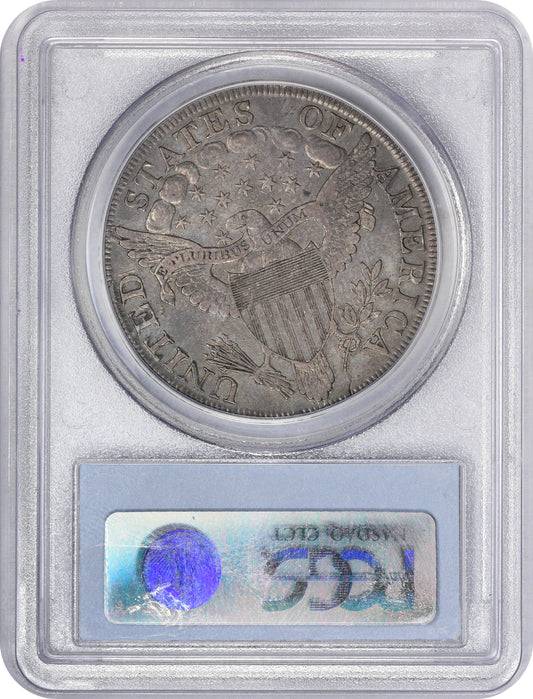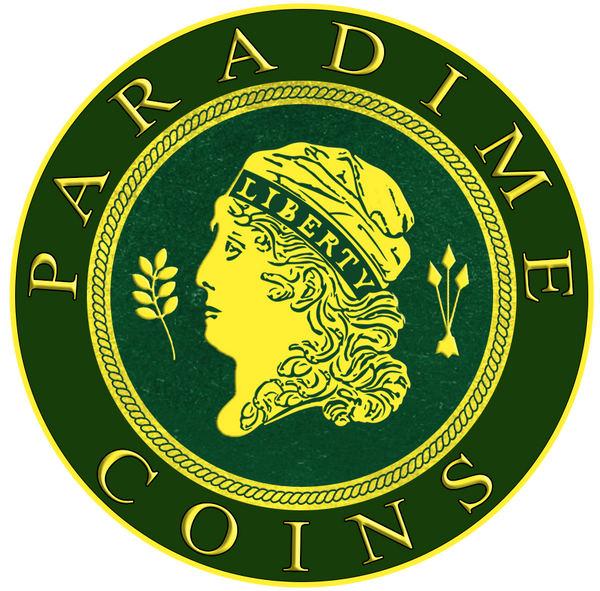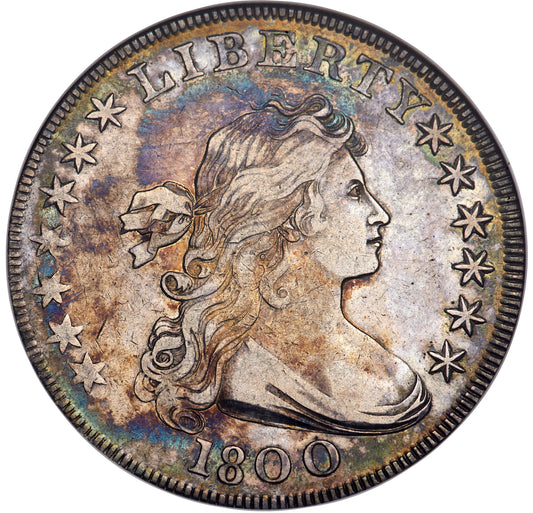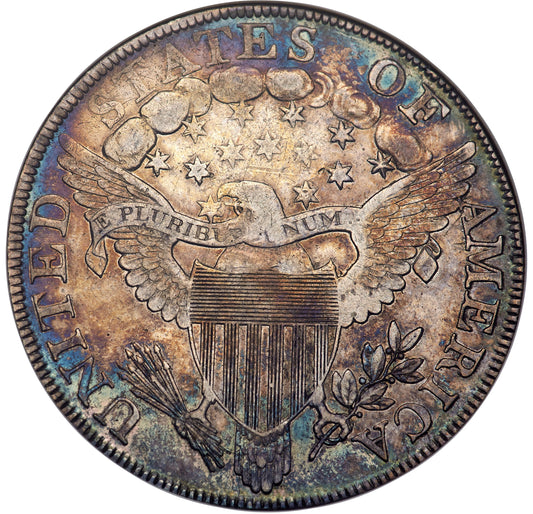Collection: Draped Bust Dollar (1795 - 1804)
-
1796 $1 LG DT SM LT XF45 PCGS CAC
Regular price $20,000.00Regular priceUnit price / per -
1800 $1 XF45 OH ANACS
Regular price $5,250.00Regular priceUnit price / per -


1803 $1 LARGE VF35 PCGS CAC
Regular price $4,750.00Regular priceUnit price / per
The Draped Bust Dollar, introduced in the fall of 1795, marked a significant evolution in U.S. coinage design. Created by Robert Scot and inspired by Gilbert Stuart’s portraiture, this coin replaced the earlier Flowing Hair design with a more refined and mature depiction of Liberty. As a cornerstone of early American ... Read More
The Draped Bust Dollar, introduced in the fall of 1795, marked a significant evolution in U.S. coinage design. Created by Robert Scot and inspired by Gilbert Stuart’s portraiture, this coin replaced the earlier Flowing Hair design with a more refined and mature depiction of Liberty. As a cornerstone of early American numismatics, the Draped Bust Dollar remains highly coveted among collectors.
Key Specifications
- Designer: Robert Scot
- Issue Dates: 1795–1804
- Composition: 89.24% silver, 10.76% copper
- Diameter: 39–40 mm
- Weight: 26.96 grams (416.05 grains)
- Edge: Lettered HUNDRED CENTS ONE DOLLAR OR UNIT
-
Business Strike Mintage:
- Small Eagle (1795–1798): 123,434
- Heraldic Eagle (1798–1804): 1,153,709
- Proof Mintage: None originally; some restrikes
Design Overview
Obverse
The obverse features a portrait of Liberty, her hair elegantly draped, facing right.
-
Inscriptions Include:
- LIBERTY above
- Date below
- Stars to the left and right (varying configurations)
Reverse Designs
-
Small Eagle (1795–1798):
- A smaller eagle perched on a cloud, surrounded by an open wreath with UNITED STATES OF AMERICA encircling the design.
-
Heraldic Eagle (1798–1804):
- A majestic eagle with a shield on its breast, holding arrows and an olive branch. Above the eagle is a ribbon inscribed E PLURIBUS UNUM and a constellation of 13 stars. This design is adapted from the Great Seal of the United States.
Historical Context and Mintages
-
Transition from Flowing Hair to Draped Bust:
- Introduced in late 1795, the Draped Bust design was initially paired with the Small Eagle reverse. In 1798, the Small Eagle was replaced by the Heraldic Eagle, which remained until the series ended in 1804.
-
Limited Mintages and Rarities:
- 1794–1798: The Draped Bust Dollar with the Small Eagle reverse is the rarer type, with limited production and survival rates.
- 1798–1804: The Heraldic Eagle reverse saw higher mintages, but pieces dated 1801–1803 are scarcer.
-
The 1804 Dollar:
- Struck in 1834–1835 for presentation sets, the 1804 dollar is one of the most famous coins in U.S. history. Eight “originals” and seven “restrikes” are known, making it an iconic rarity.
Type Breakdown
Type 1: Small Eagle (1795–1798)
-
Description:
- Obverse: Draped Bust Liberty with LIBERTY, stars, and date.
- Reverse: Small eagle within an open wreath.
-
Collectibility:
- Scarcest Draped Bust Dollar type.
- Commonly found in grades from Very Good to Fine, with Extremely Fine and AU examples being rare.
- Strictly Uncirculated coins are exceptional rarities.
- Known for adjustment marks and uneven strikes.
Type 2: Heraldic Eagle (1798–1804)
-
Description:
- Obverse: Similar to the Small Eagle type, with standardized stars (seven left, six right).
- Reverse: Larger eagle with shield, olive branch, and arrows, surrounded by UNITED STATES OF AMERICA.
-
Collectibility:
- Most commonly found dates are 1798 and 1799.
- Coins dated 1800–1803 are scarcer, with grades typically ranging from Very Good to Very Fine.
- Extremely Fine coins are fairly scarce, while AU and Uncirculated examples are significant rarities.
Why Collect Draped Bust Dollars?
-
Historical Significance:
- As one of America’s earliest and most iconic silver coins, the Draped Bust Dollar captures the essence of the young nation's artistry and ambition.
-
Design Excellence:
- The Small Eagle and Heraldic Eagle reverses showcase the evolution of early American numismatic design.
-
Collector Demand:
- From the scarcities of the Small Eagle type to the legendary 1804 dollar, these coins appeal to collectors of all levels.
Shop Draped Bust Dollars at ParadimeCoins.com
Discover the beauty and rarity of Draped Bust Dollars at ParadimeCoins.com. Whether you’re seeking a historic 1795 Small Eagle or an 1800 Heraldic Eagle, our curated selection offers coins of exceptional quality and significance. Secure a piece of numismatic history today!
... Read Less












